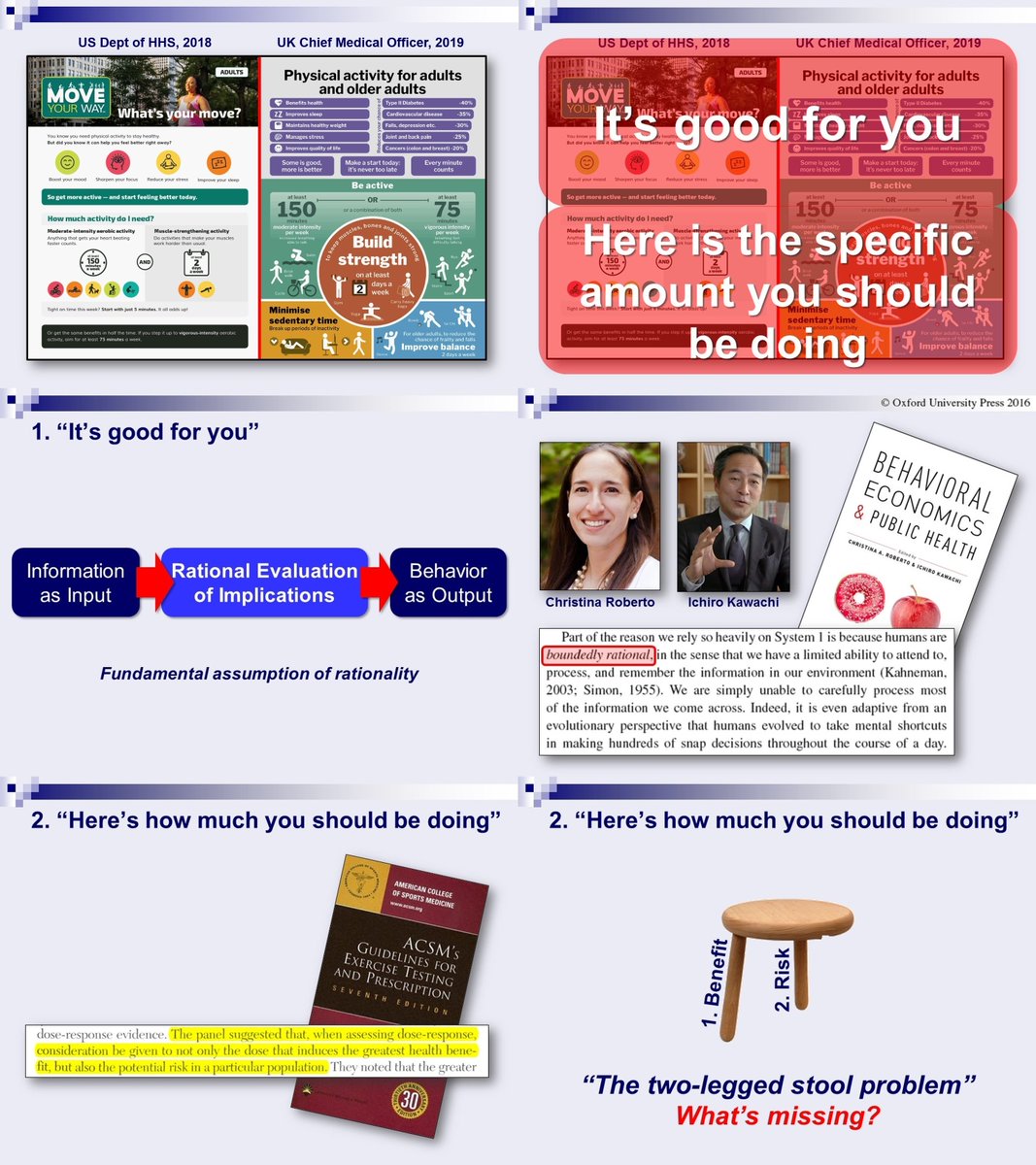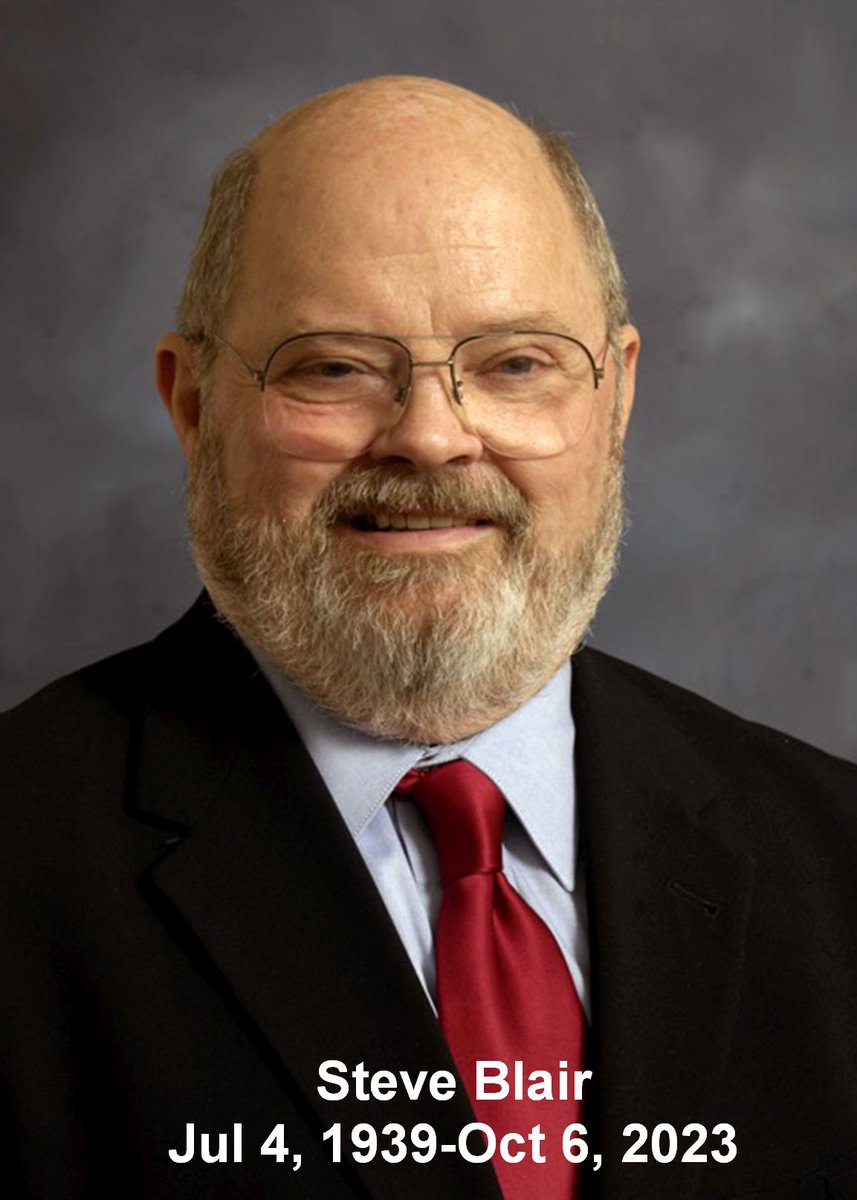2018 US phys act guideline (left), 2019 UK guideline (right), same approach & numbers. 1) "It's good for you" assumes rationality, which is bounded. 2) "Here's how much you must be doing" based on benefits/risks (like drugs). Disregards that people must CHOOSE to do it long-term. 

Compare the structure and underlying rationale of the 2018 US & 2019 UK guideline. They reflect the same approach we have used as a field for half a century: (1) Here's a bunch of percentages to convince you of the benefit, and (2) here's the specific amount you should be doing. 

Exercise prescription guidelines and physical activity recommendations represent our "ultimate" product, the culmination of our knowledge production, and the epitome of the "value proposition" we offer society as a scientific field. So, they must reflect the best we have to offer
Yet, somehow, we have chosen to remain "stuck" on the same approach for half a century, unwilling to undergo a process of critical self-reflection, to look for flaws or limitations in our approach. We continue doing the exact same thing, only changing our numbers every few years.
Let's take the "this is good for you" argument as the main "hook" we use to catch people's attention and create a basis of interest and motivation. We have traditionally bombarded people with specific percentages of lowered disease risk that we happen to think are compelling.
Clearly, this approach is based on a fundamental assumption that people, being rational creatures, are interested in this information, will seek it, understand it, retain it, and use it to make future behavioral decisions. But do they? Is there evidence this actually happens?
The rise of the field of behavioral economics should have taught us (as it is beginning to teach growing segments of psychology, medicine, and public health) that humans, sadly, do not behave this way. They are rational, sure, but only to an extent. Rationality is "bounded." 

At this point, we should have been able to absorb the emerging evidence for bounded rationality, and we should have reflected on the implications of this phenomenon for the promotion of exercise and physical activity. If much of human behavior is not rational, what is driving it?
Behavioral economics has argued that many behavioral choices are driven by heuristics and biases acting as "shortcuts" to simplify complex decisions that exceed our capacity to process information in a rational, reflective, analytic manner. "Affect" is one such heuristic.
The 2nd part of our approach: this is how much physical activity you should be doing, quantified as specific numbers for frequency, duration, intensity. The origins of this idea come from the development of pharmaceutical prescriptions, based on a consideration of benefit / risk.
Adopting the benefit/risk ratio as the basis of exercise prescriptions dates to the earlier efforts by the American College of Sports Medicine to develop prescriptions intended for clinical settings. If "Exercise is Medicine," it made sense to mimic the rationale used in medicine 

But there is clearly an important difference. Exercise and physical activity are not a pill. They are behaviors that people must choose to do, willingly, voluntarily, and for the rest of their lives. And they are very costly activities in terms of both time and effort.
It is insufficient to develop prescriptions and recommendations that are (1) effective and (2) safe. They will remain irrelevant as long as people are unwilling to partake in the behavior. And in order to do so, exercise and physical activity must compete against other options. 

People operate under conditions of self-determination; they have the freedom to do whatever they wish, even if it is "non rational" from a health-promotion standpoint. As long as other lifestyle options offer them more enjoyment, they will gravitate toward them in the long run.
Therefore, it may be time, after decades of failing to increase public participation in physical activity, to critically reexamine our approach. Can we do better? Is there perhaps relevant knowledge out there that we have so far chosen to ignore?
If exercise science / kinesiology wishes to become a truly integrated interdisciplinary science, then its "ultimate product", namely exercise prescription guidelines and physical activity recommendations, should integrate the knowledge bases of all its subdisciplines. It is time.
• • •
Missing some Tweet in this thread? You can try to
force a refresh






















